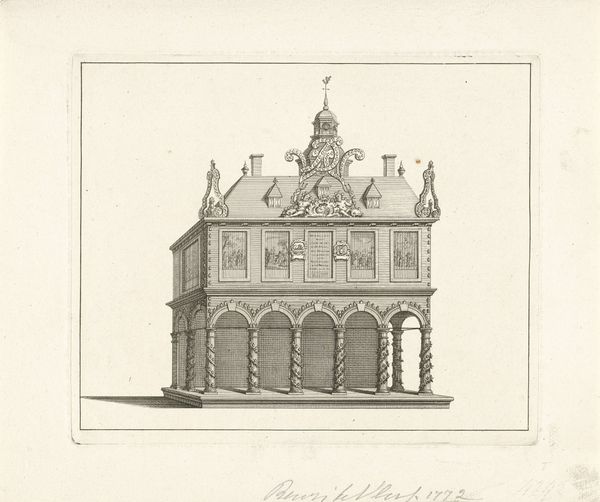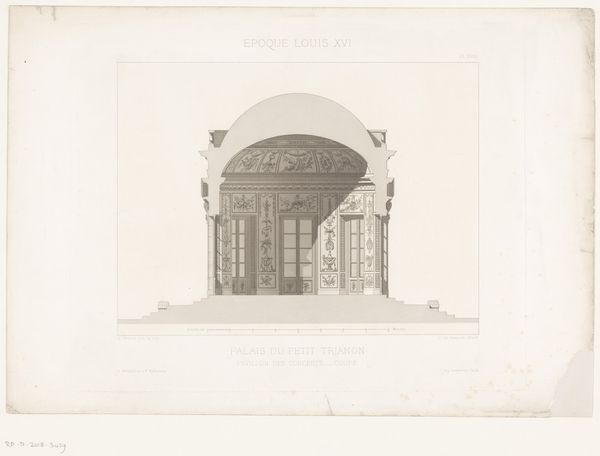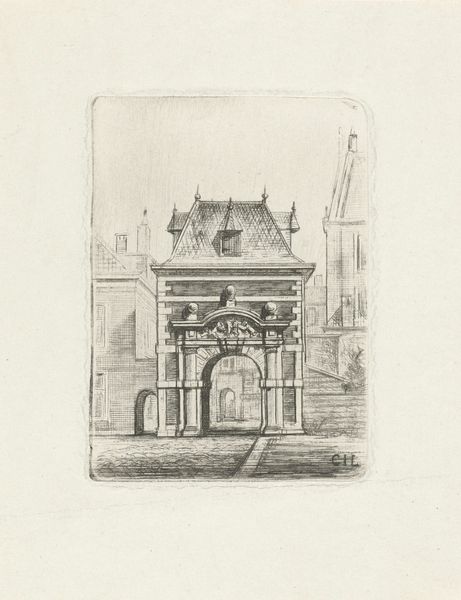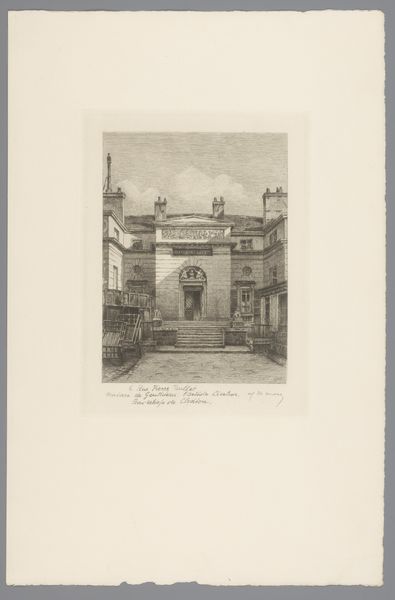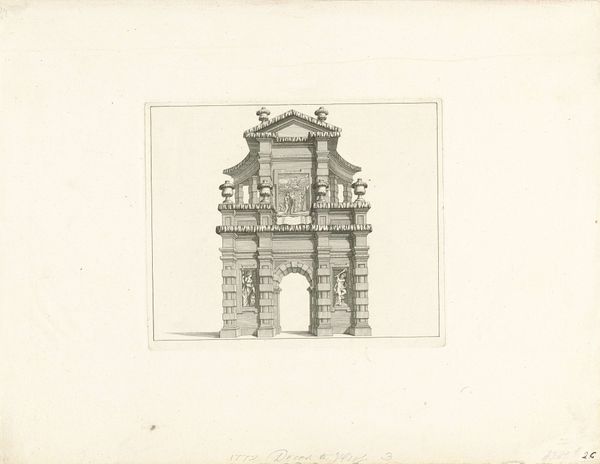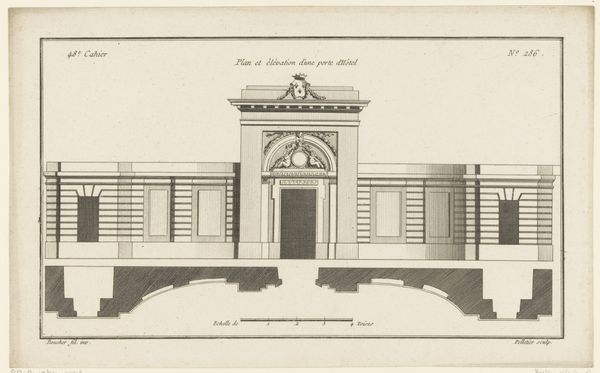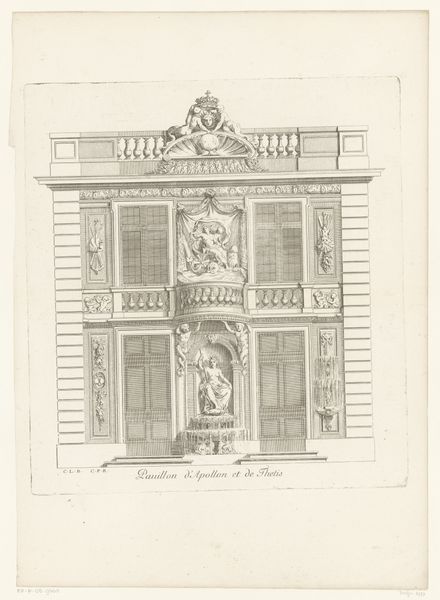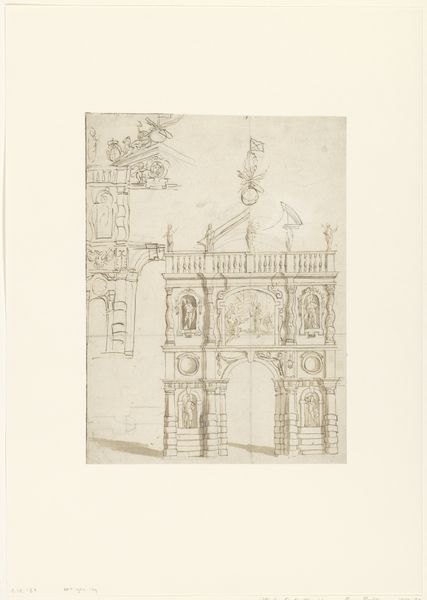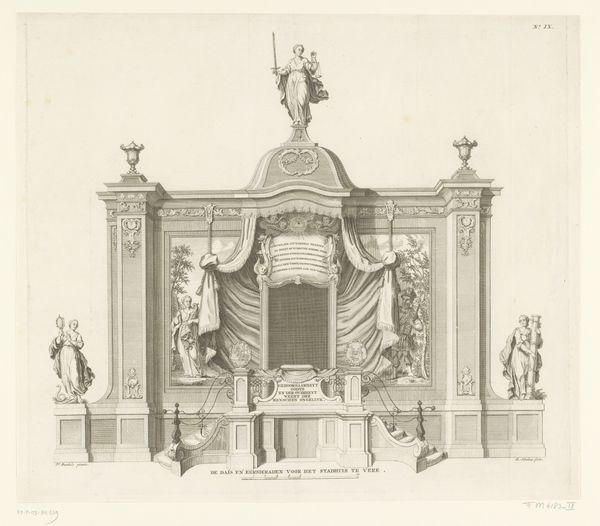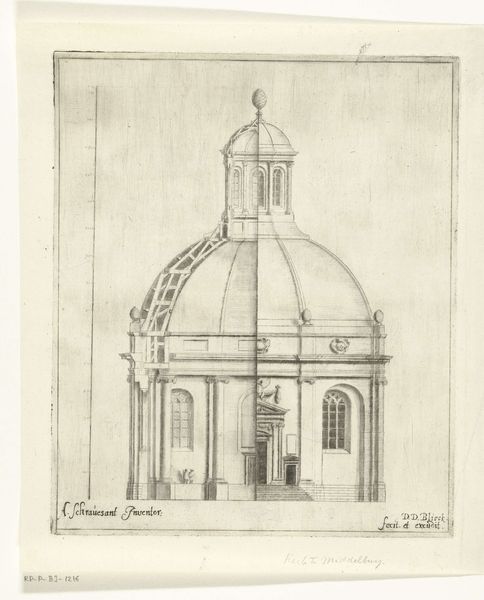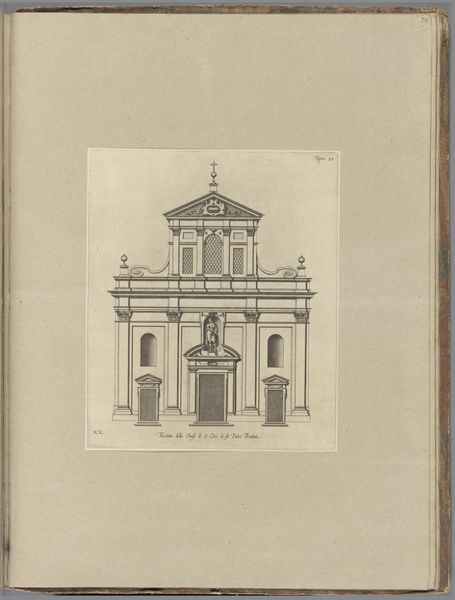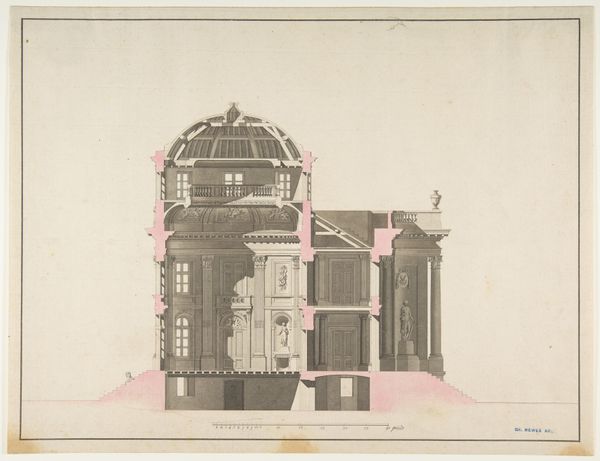
Dimensions: height 175 mm, width 210 mm
Copyright: Rijks Museum: Open Domain
Curator: Here we have a remarkable etching and engraving titled "De Middelburgse Poort te Vlissingen, 1772" by Caspar Jacobsz. Philips. It showcases a gate in Vlissingen. Editor: It's striking. The precision of the lines creates a sense of imposing solidity, even though it's just an image on paper. I’m immediately thinking about access and exclusion, who is kept out by such grand entrances? Curator: That's a very pertinent question, and certainly aligns with the social context. These types of gates weren't simply aesthetic; they controlled the flow of goods and people, demonstrating civic power. It's very much of the Baroque style, with its love for architectural elements, grand statements. Editor: Exactly, this isn’t just about pretty architecture. Think about the message this structure sends. It projects authority, regulates movement, and frames who belongs and who does not within its boundaries. Are there records of how the townspeople viewed this gate? Curator: While direct records of individual views are scarce, we can examine municipal documents, which reveal investment decisions and regulations tied to trade, and customs tied to that entry point, hinting at what the city prioritized protecting. The fact it's a drawing or etching is interesting, it makes me think about it's use as something for citizens to consider their place within the urban landscape. Editor: Right, disseminating an image makes a statement of its own. This way the reach of the imposing structure can be greatly expanded beyond simply existing. Were the decisions regarding the visual elements influenced by those outside of the ruling class, who wouldn't even use it? Curator: Good point. There is the consideration that those that have a high stature may well have designed such buildings in accordance to social requirements, which would naturally allow a design that better fit those who commissioned the building. A very real question is what kind of agency does that allow for ordinary citizens, and is such design accessible to everyone regardless of wealth or power. Editor: Absolutely, the politics of representation are never neutral. By examining those silences we can engage the material more meaningfully. This image makes me wonder, did those going through the gates even spare a second thought to admire them? Curator: A fascinating speculation! It allows us to appreciate that even if these Baroque flourishes can tell us about powerful symbols, they did exist alongside the work-a-day life of merchants, soldiers and farmers. Thank you for broadening our discussion of this artwork to what lies behind its symbolism and history. Editor: Of course! These buildings don't exist in isolation, and need to be placed in wider society if we are to fully analyse them!
Comments
No comments
Be the first to comment and join the conversation on the ultimate creative platform.
